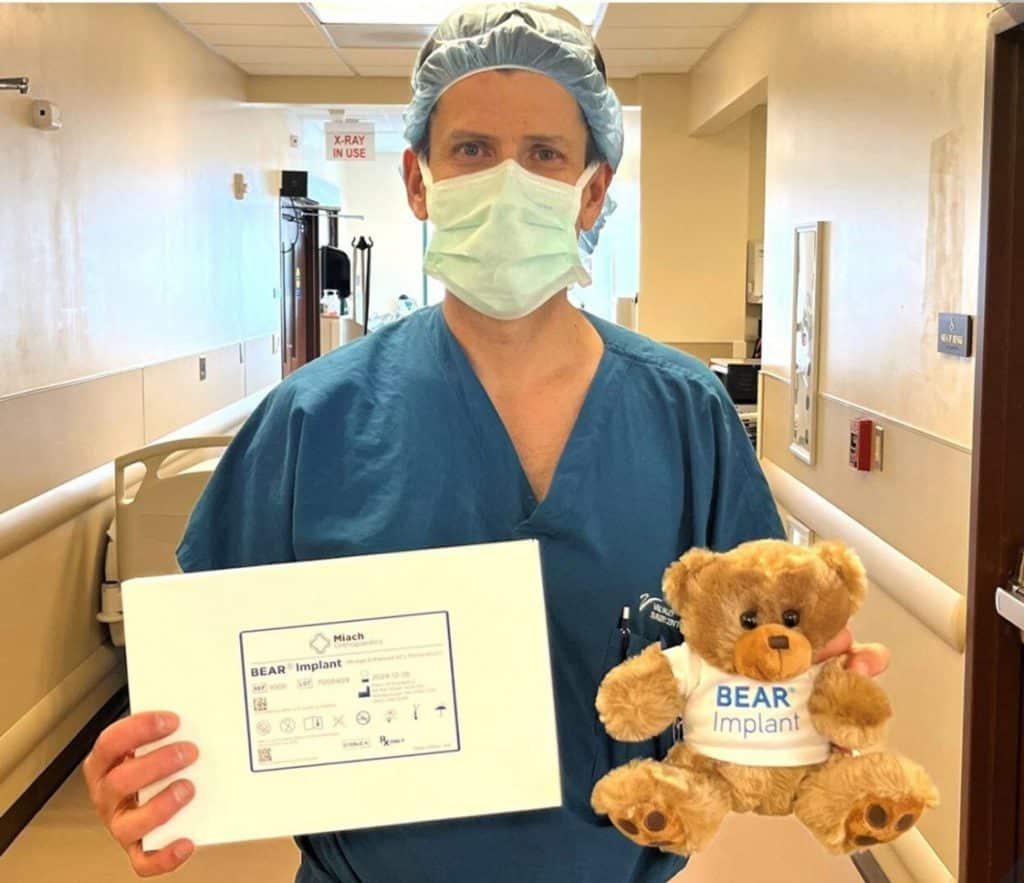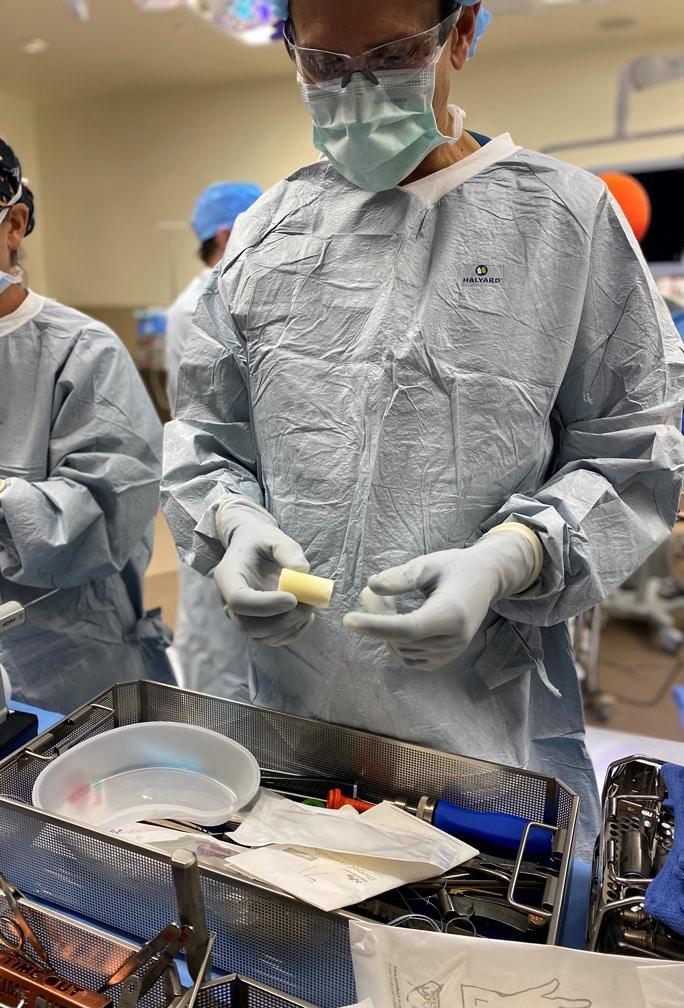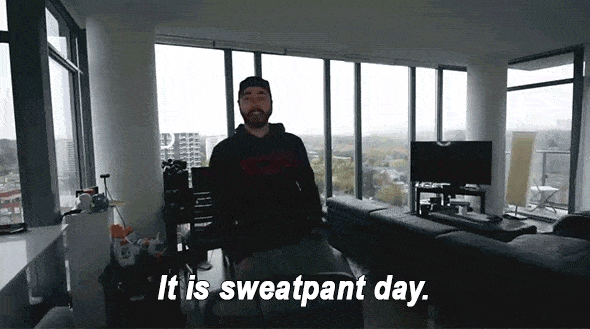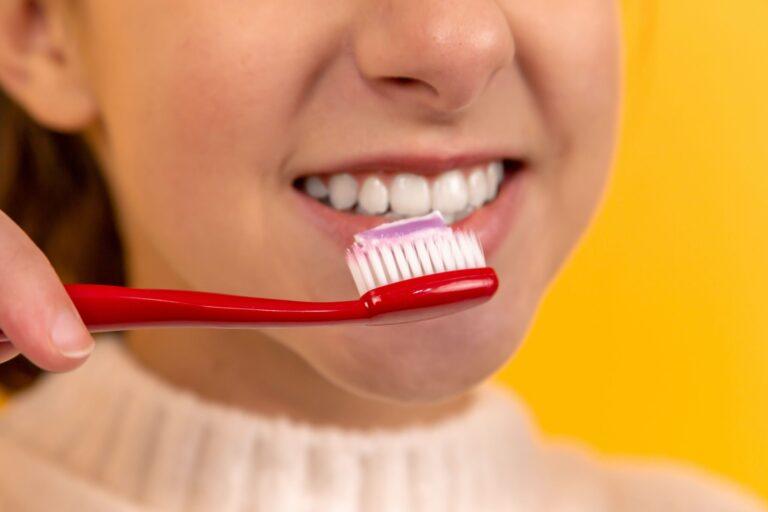Sponsored by Vail-Summit Orthopaedic & Neurosurgery
While ACL surgeries are something of a rite of passage for mountain town skiers and cyclists, they’re still an invasive procedure that leaves folks sidelined for a period that’s often uncomfortably long for an active, outdoorsy population.
At Vail-Summit Orthopaedics & Neurosurgery, a new technique has been introduced that promises to shorten recovery time and leave patients with better post-surgical biomechanics.
Recently, Dr. Richard Cunningham, an orthopaedic knee and shoulder specialist at VSON, performed the first Bridge-Enhanced ACL Restoration, also known as the BEAR technique, in the Vail Valley. This new procedure helps save the patient’s ACL tissue and uses a biologic collagen implant that acts as a virtual scaffold to promote the body’s healing process. The technique may also make it possible to repair ACL damage that was previously difficult to treat with more standard approaches.

known as the BEAR technique, in the Vail Valley. This new procedure helps save the
patient’s ACL tissue and uses a biologic collagen implant that acts as a virtual scaffold
to promote the body’s healing process. (Photo provided by VSON)
“In our communities, we see so many ACL injuries during ski season, and we’ve long been successful in repairing the torn ACL with tendon grafts,” Cunningham says.
The traditional procedure, he explains, can be problematic as they require tissue to be taken from a different tendon in the body. Additionally, the knee joint is bathed in fluid, making it difficult for blood to flow into the donated ACL tissue. This is needed for the healing process. With a poor blood supply and limited material to help heal and rebuild the natural ACL, the recovery time can often stretch as long as eight to nine months. The new BEAR technique was pioneered by pediatric surgeon Dr. Martha Murray, a professor of orthopaedic surgery at Harvard Medical School and a sports medicine surgeon at Boston Children’s Hospital, and promises recovery times as short as five months for some patients.
Cunningham says the FDA-approved technique uses a bovine collagen implant that acts as a tether to augment the traditional ACL procedure, with great potential success for proximal tears – ACL injuries that are “high up” on the tendon – by creating a scaffolding for cells to glom onto, and promote more natural growth.
“This procedure is all about saving your own anatomy,” he says. “In many ways, that’s better, since you retain your own nerve and blood supply, and it leads to more natural healing. In our active community, that’s quite exciting.”

own anatomy,” Dr. Cunningham says. “In
many ways, that’s better, since you retain
your own nerve and blood supply, and
it leads to more natural healing. In our
active community, that’s quite exciting.”
(Photo provided by VSON)
Cunningham first recommended the BEAR technique to an active patient who tore her ACL on the slopes and whose MRI results showed a proximal tear. By integrating the new procedure into the patient’s ACL Restoration, Cunningham was able to use the BEAR implant in the surgical gap to help promote healing.
“The data that’s out there on this procedure shows fairly impressive results,” he says. “So far, it’s largely been used so far in kids, whose bodies are already prone to faster recoveries, and that’s been helpful for them. It’s hard to hold back a 10-year-old kid from sports and activities for long. The BEAR technique has been a way to fix their injury earlier and get them back to an active life.”
The next step, Cunningham says, is introducing the procedure to the adult population, who can also reap the same benefits.
“For patients with the right kinds of tears, it can mean half the recovery time, maybe five months. There’s also not as much atrophy, meaning patients don’t lose as much muscle during recovery. And it helps increase the overall chances of success in a full recovery.”
Cunningham’s team is nationally renowned for its traditional ACL surgical work. The new BEAR procedure may be more frequently used to help augment those procedures, especially when it shows promise of speeding up recovery times.
“We still treat proximal tears traditionally. Now, if it’s right for the patient, we’ll be able to use the BEAR implant between the ligament and the bone to assist with healing. We hope to eventually expand to other indications and be able to tackle tears or ruptures in other parts of the ACL.”
Cunningham notes that the BEAR technique can be more costly, but the improved outcomes and considerably shorter recovery time will appeal to many patients. Incorporating this innovative surgical technique into Cunningham’s practice fits into VSON’s mission of advancing the care of patients with orthopaedic injuries and working alongside their patients to develop a treatment plan that gets them back to the activities they love.
This content was originally published here.




















